It was obvious from her early days that Mildred had inherited many of her father’s pastoral gifts. She was an exceptionally good public speaker, much in demand as an MC at various events. She had a winning way about her that made people love her everywhere she went, and she cared for them as a pastor does. She had administrative ability, and enjoyed creative writing in the form of stories and poems. She loved committee work and served effectively on many church boards.
One thing that impressed me, even as a boy, was Mildred’s ability to persuade people. She would get on the phone and ask people to help with this task or that assignment, and she had a remarkable ability to get a positive response. She knew just how to encourage people and make them feel good about what they were doing – the mark of a true leader.
When the family moved to California, Mildred’s Quaker connections in Indiana were broken. It was a difficult transition for her. But she soon grew to love the Whittier Friends Church, and her leadership roles in the local church, with the Friends denomination in California, and even nationally among Friends expanded greatly after the move.
While living in Indiana Mildred became adept at getting her name and photo in the paper, and she soon demonstrated that she had not lost the knack after moving to California. This page displays a few articles that show her at work among Quakers.
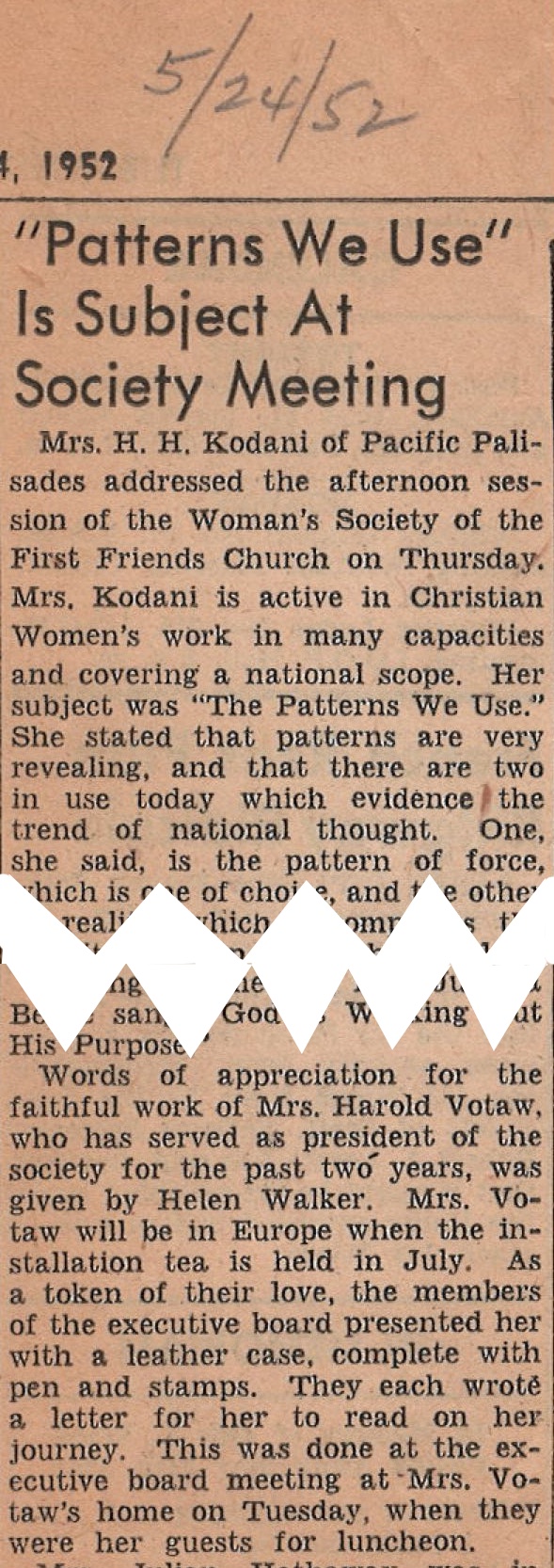
Here Harold and Mildred, Frank and Tirzah, and Dick and Doree pose with Robert Cope, the pastor at First Friends Church in Whittier. The occasion appears to be an anniversary party for Frank and Tirzah, and the family had a close relationship with the pastor.
One of the larger Quaker organizations that Mildred served was the United Society of Friends Women, also known as “the Women’s Society” or USFW. The Society extended nationally through all Friends denominations, and had its own officers and boards.
The occasion of this news photo, which made the local paper as well as the Quaker publication pictured here, was a national meeting of the USFW held at Whittier that year. The Whittier Friends church was the largest in California at that time, so it was often chosen for statewide and national gatherings.
Mildred was the president of the California Friends Women and no doubt chaired the meeting, which welcomed the national president of the Society as well as representatives from all over the United States.
The article at left is an account of a Women’s Society Meeting in which Mildred was honored for her two years’ service as president of the organization. The article mentions that Mildred and Harold are traveling to Europe. This trip was taken in the summer of 1952. The Votaws were representatives from California to a world conference of Quakers which was held in London.
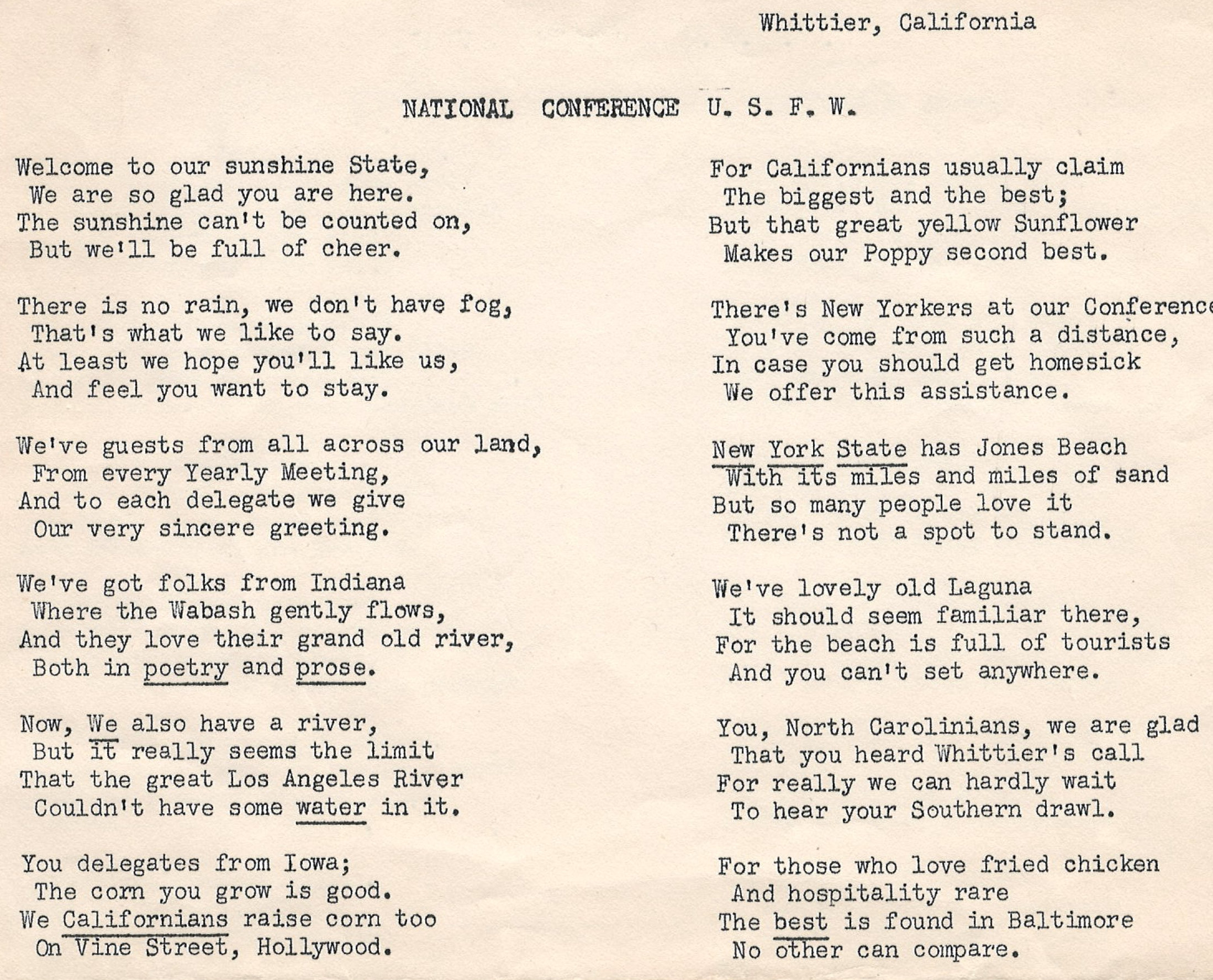
The above is a scan of the top half of a poem Mildred wrote to welcome the representatives from the various states to the national USFW meeting (described above). The whole poem is twice as long as what is shown, but you can see enough here to get the idea.
The article at left describes a typical church event for which Mildred served as MC and probably planned the whole program. She loved contests, and often designed a new game for any event that she was planning, as this article describes.
He didn’t get his picture in the paper as often as Mildred did, but Harold was a strong leader in Quaker circles as well. Here he is shown as he begins serving as leader of a statewide Quaker men’s group. Most of Harold’s Quaker service was done at the local church in Whittier, where I remember him serving as clerk (the top lay leadership position).
The above is a commendation letter written to Harold and Mildred by the superintendant of California Yearly Meeting, thanking them for their service to the Quakers in California. (You may have to click on the letter to enlarge it for reading.)
Harold wrote this letter to Aunt & Unc in Indiana to bring them up to date on Dick’s military draft status. Note the names of several other young men in the Whittier Friends Church who were making similar attempts to claim conscientious objector status. Harold says something near the end of the letter about Dick going back to school, but I have no record of that.
Mildred believed that the above letter might influence the draft board to grant the conscientious objector classification to Dick. (I doubt this, but who knows?) Using California Yearly Meeting stationery that was printed with her name on it, she detailed her record of Quaker service to demonstrate the sincerity of her (and, therefore, Dick’s) faith. Only the first page of her letter is shown here; the details are printed at right.
The above news photo was taken at the announcement of a new church plant in La Mirada, California, to be called Granada Heights Friends Church. Mildred is shown standing with other officials of the California Friends organization, along with Verle Lindley who had been chosen as the first pastor of the church. This church grew quickly and eventually surpassed the Whittier church as the largest Friends church in California. Karen and I attended Granada Heights church, where Verle Lindley was still the senior pastor, during the school year 1977-78.
In the early 1950s, the United States was involved in the Korean War. Dick had registered as a conscientious objector when he turned 18 in 1946, but his address and status had changed, and the Selective Service was re-classifying all young American men. He once again had to apply for a conscientious objector classification. As a lifelong Quaker, who followed the Quaker tradition (called a “testimony”) of pacifism, and a member of a prominent Quaker family, he believed that he could show himself worthy of that classification.
This was a matter of great concern to the family, as Dick was now married and had a child (me!). Letters from Harold and Mildred, reproduced here, demonstrate that interest.
I have no documentation for it, but the family story is that Dick did qualify as a conscientious objector, and was given the opportunity to do alternate service for the country. My memory of the story is that he worked for the post office, where he’d had previous experience.
Dick’s draft cards from 1948 and 1954
In September of 1951 Mildred wrote a long letter to the local Draft Board in Downey, California. Dick was registered as a conscientious objector, along with several other young Quaker men from Whittier, and an effort was being made for him to maintain that classification in the draft. Apparently all such classifications were under review during the Korean War. Mildred thought that it might help if the local draft board got some information about Dick’s Quaker heritage.
Mildred wrote on the stationery of California Yearly Meeting’s Board of Christian Education, stationery that had her name printed along the left column where she was named chairman of the youth division. In the letter, she tells about the family’s long involvement and dedication to the Quaker church. Here are the facts that she cites:
1. Her dad was Superintendent of Western Yearly Meeting (Indiana) when she was born. She was raised believing in the Quaker testimonies.
2. She began teaching Sunday school classes when she was in the 8th grade and has been teaching ever since.
3. She was active in youth groups in high school and college, and married a Quaker boy in 1926. They have tried to maintain Quaker principles in their home.
4. She held these offices in the national denomination (Five Years Meeting):
a. Secretary of Children of the United Society of Friends Women
b. Program Editor of the Advocate (national Quaker women’s magazine)
c. Member of the Five Years Meeting Board of Christian Education
5. She held these offices in the state denomination (California Yearly Meeting):
a. Chairman of Youth and Christian Education
b. Chairman of Christian Home Life on Board of Christian Education
c. Children’s secretary of Yearly Meeting United Society of Friends Women
d. Recording clerk of the Yearly Meeting Board of Ministry and Council (Elders)
e. Chairman of the Board of Youth Council
f. Youth secretary of the Yearly Meeting United Society of Friends Women
6. Local church offices held:
a. President of Women’s Society
(Many other roles that she thinks are too numerous to mention)
She closes with “I am somewhat embarrassed to have listed all of these positions. I only did it to show you Richard’s mother is very sincere in her faith. I firmly believe that Richard is sincere in his feelings covering his peace testimony.”

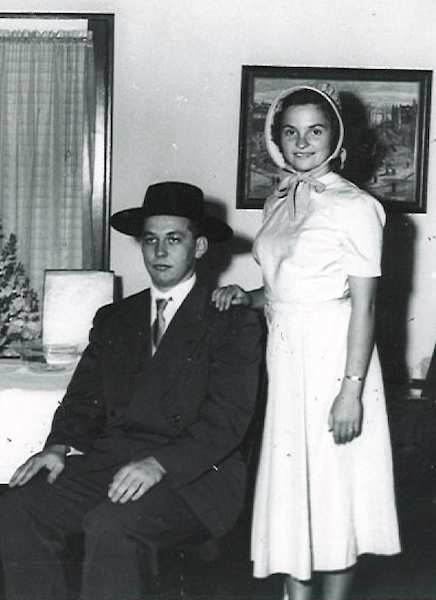
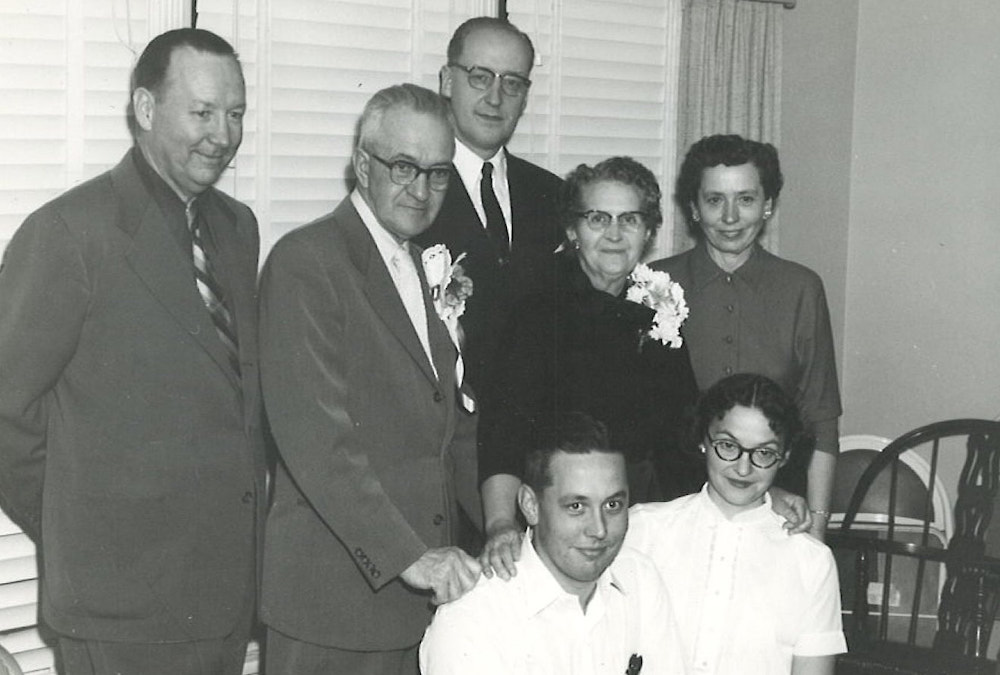
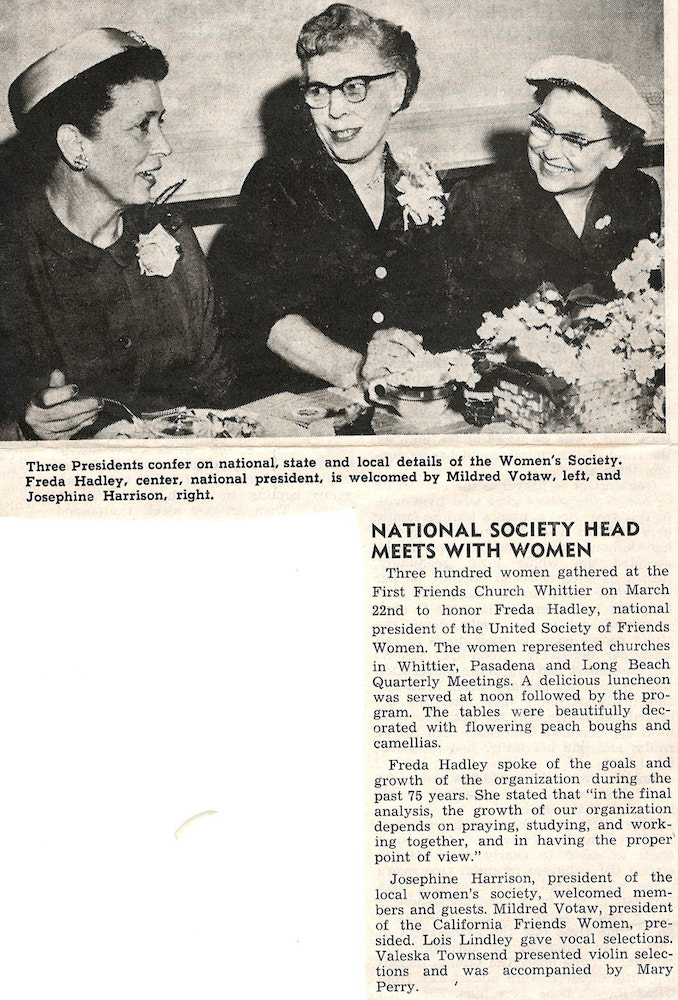

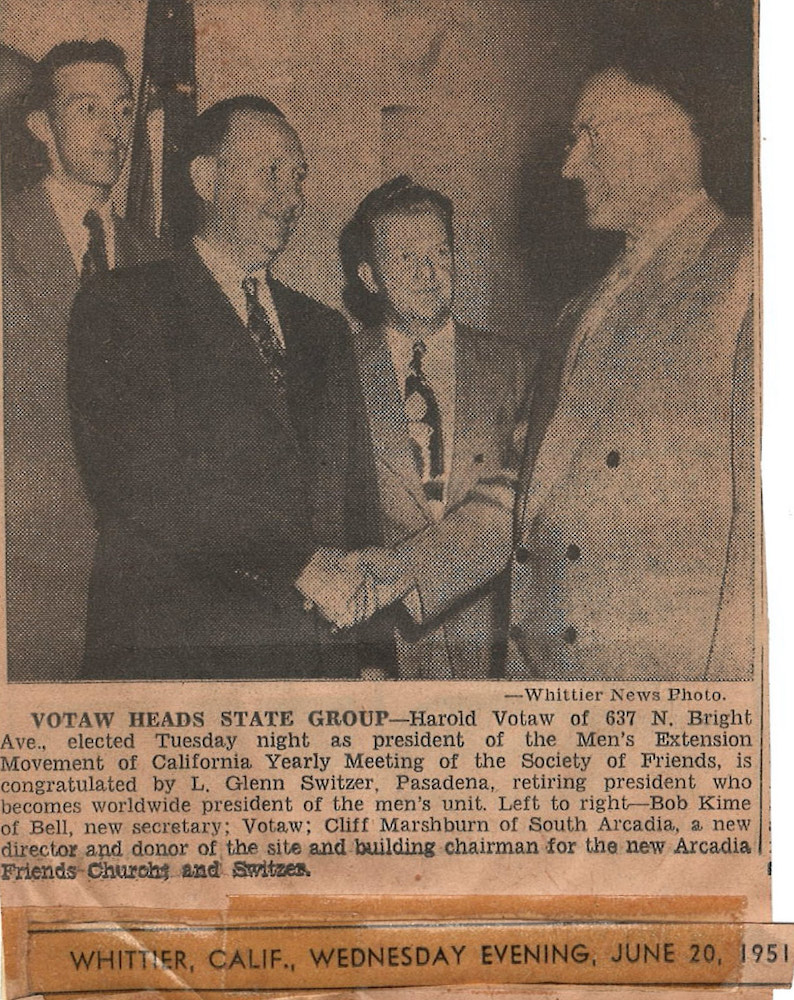
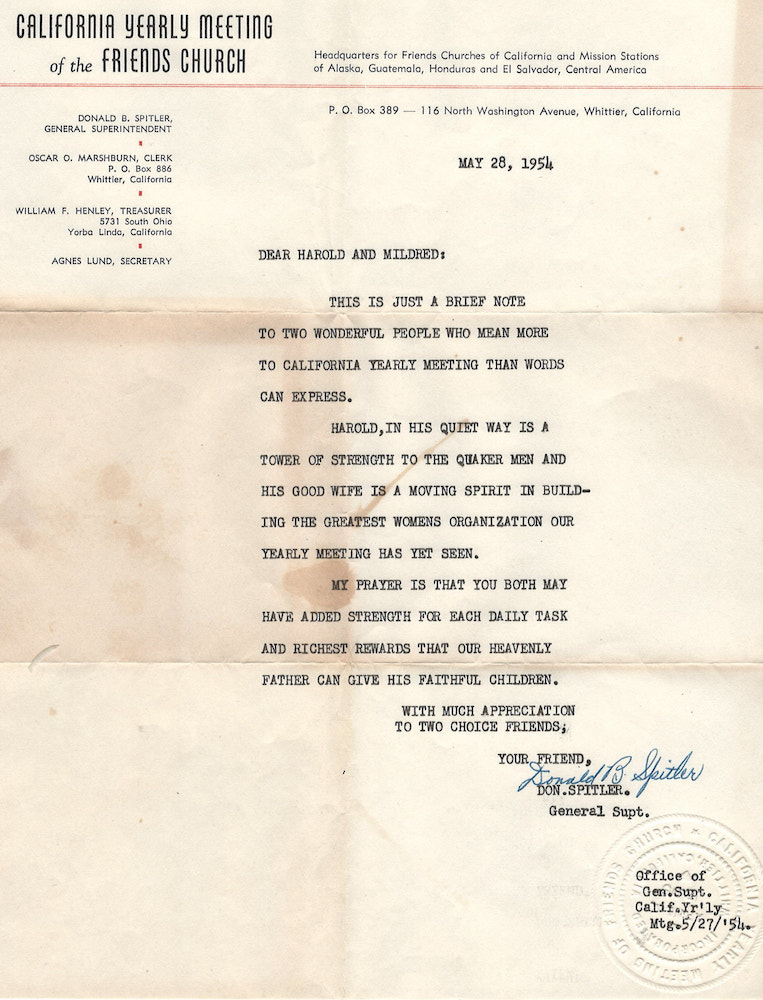
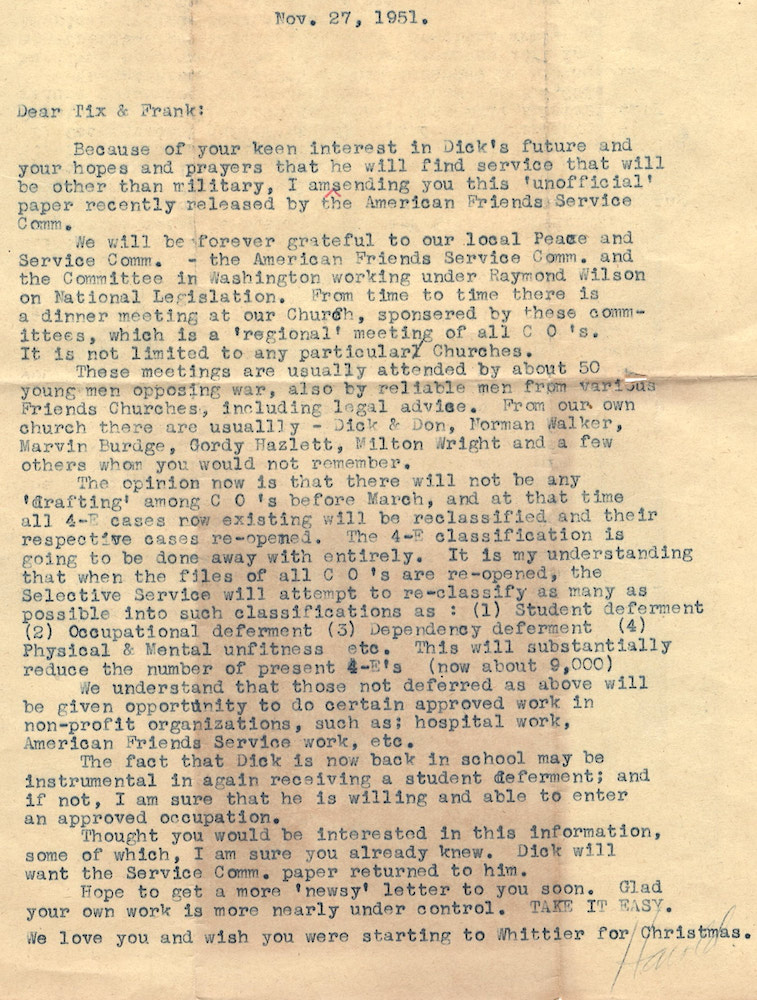
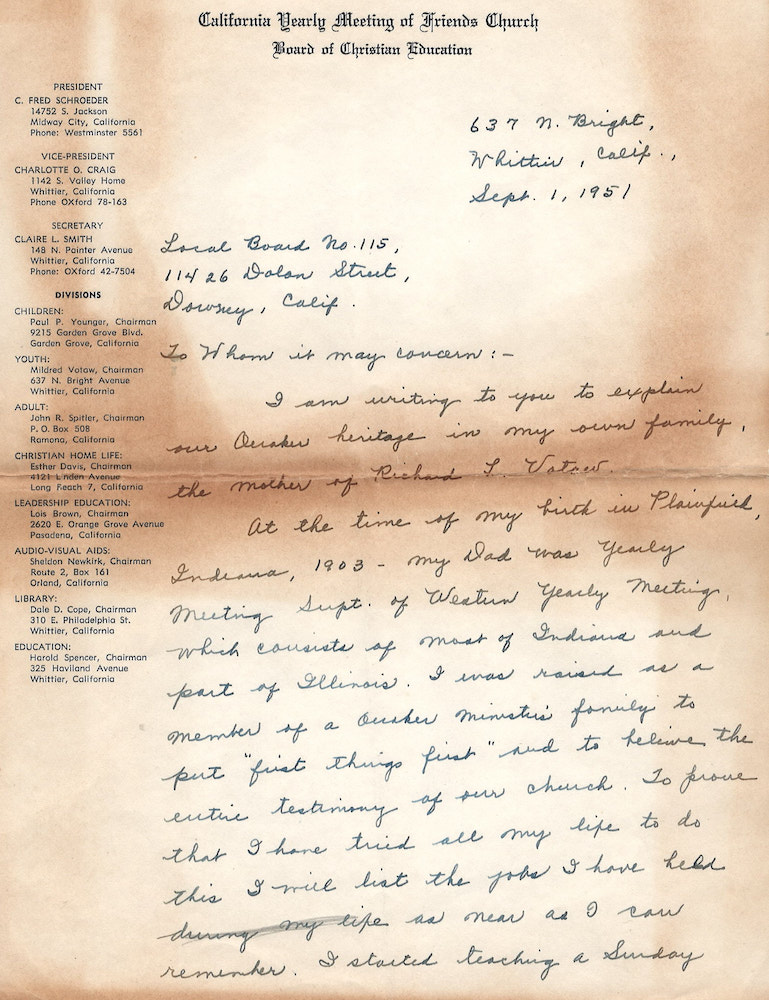
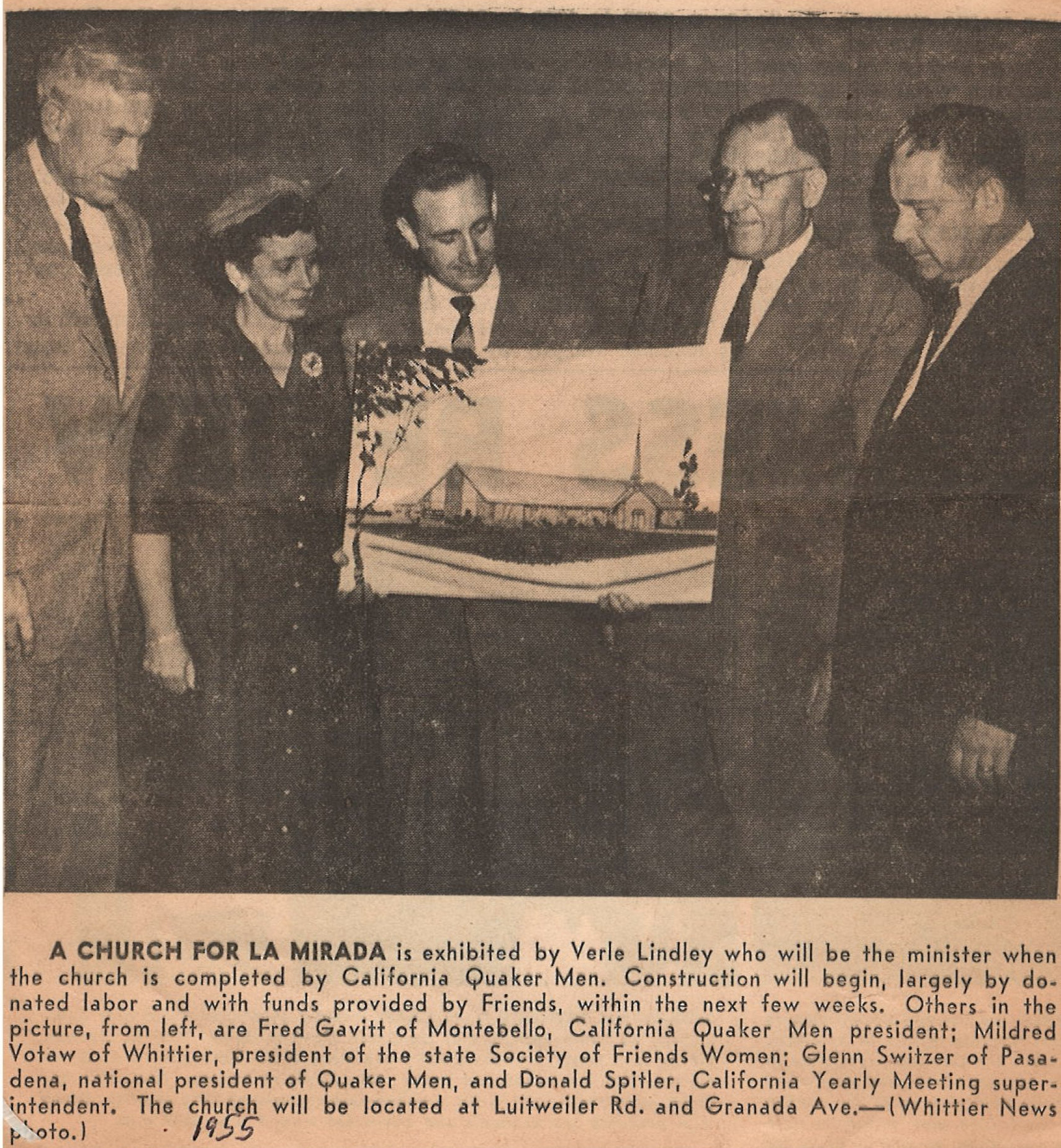
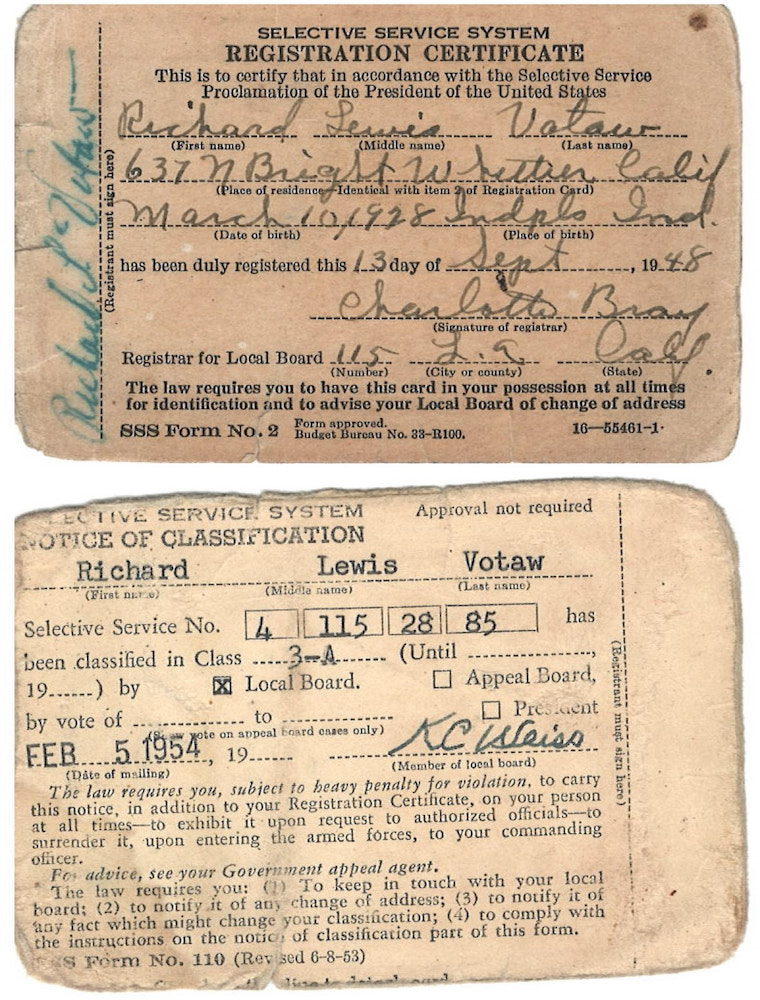
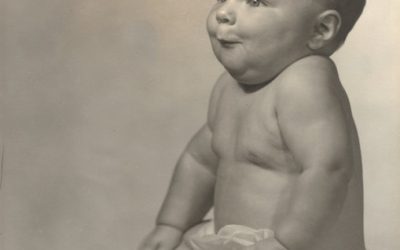
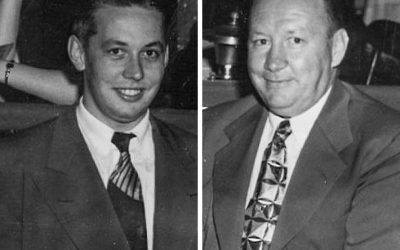
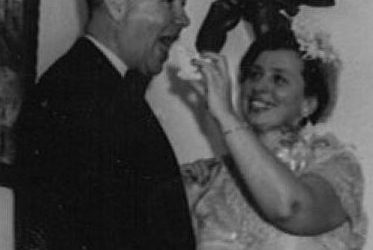
0 Comments